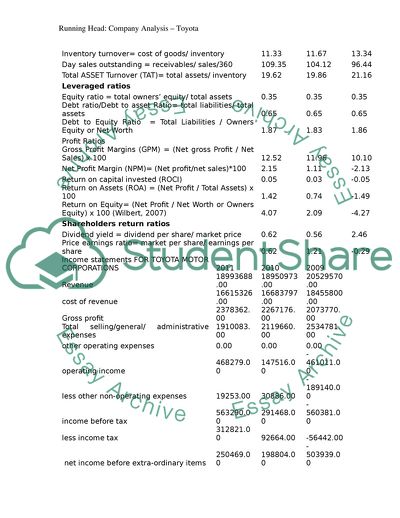Cite this document
(Financial Analysis: AUTOMOBILE INDUSTRY---TOYOTA Research Paper, n.d.)
Financial Analysis: AUTOMOBILE INDUSTRY---TOYOTA Research Paper. https://studentshare.org/finance-accounting/1772893-financial-analysis-automobile-industry-toyota
Financial Analysis: AUTOMOBILE INDUSTRY---TOYOTA Research Paper. https://studentshare.org/finance-accounting/1772893-financial-analysis-automobile-industry-toyota
(Financial Analysis: AUTOMOBILE INDUSTRY---TOYOTA Research Paper)
Financial Analysis: AUTOMOBILE INDUSTRY---TOYOTA Research Paper. https://studentshare.org/finance-accounting/1772893-financial-analysis-automobile-industry-toyota.
Financial Analysis: AUTOMOBILE INDUSTRY---TOYOTA Research Paper. https://studentshare.org/finance-accounting/1772893-financial-analysis-automobile-industry-toyota.
“Financial Analysis: AUTOMOBILE INDUSTRY---TOYOTA Research Paper”. https://studentshare.org/finance-accounting/1772893-financial-analysis-automobile-industry-toyota.


